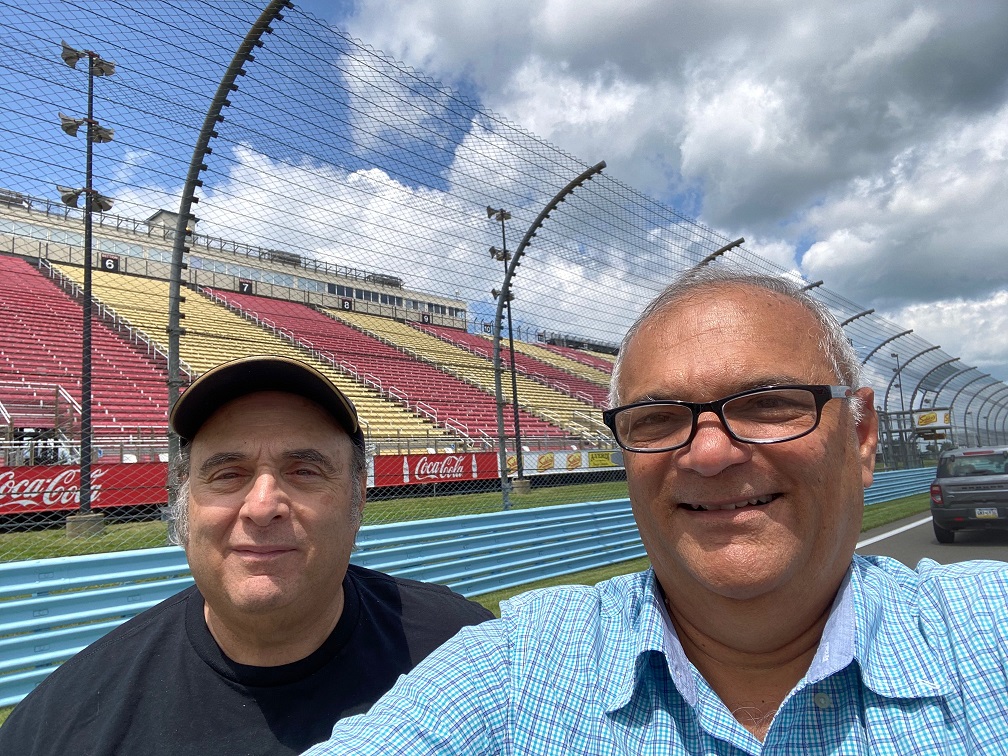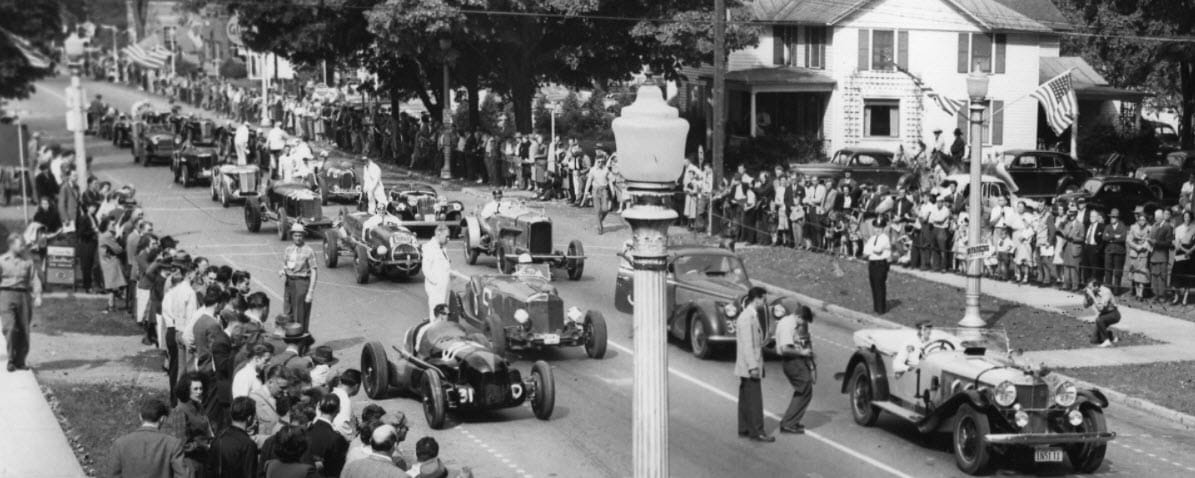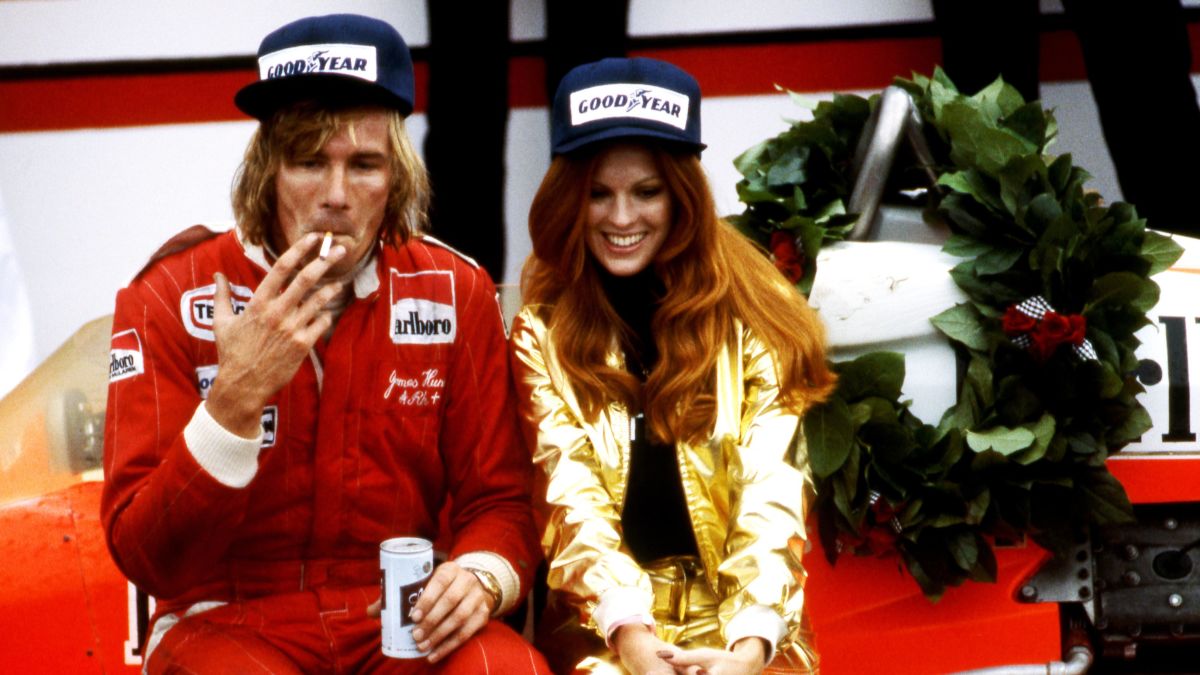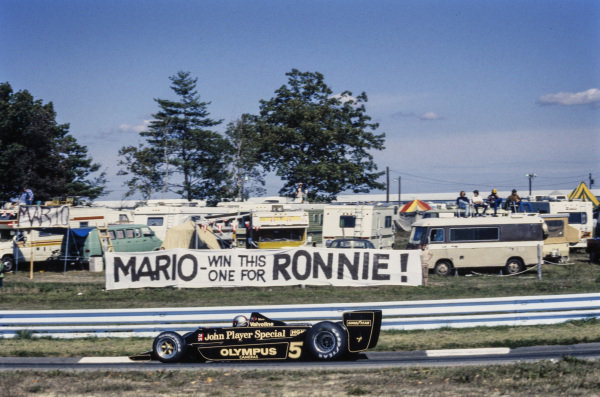Play Podcast: 07-25-23f1weekly1002mp3
NASIR RETURNS FROM ANOTHER HISTORICAL JOURNEY THIS TIME IT’S THE LEGENDARY RACE TRACK “WATKINS GLEN INTERNATIONAL” WITH LONG TIME F1WEEKLY LISTENER PAT SCOPELLITI. WE HAVE ANOTHER FULLY LOADED MOTORSPORTS MONDIAL WITH YOUR GLOBAL RACE RESULTS.

Nasir Hameed with long time F1Weekly.com listener Pat Scopelliti visit Watkins Glen International, July 2023. Photo: Nasir Hameed
Road racing came to Watkins Glen in 1948 by way of Cameron Argetsinger, a law student at Cornell University who often stayed at his father’s summer home on Seneca Lake, with the family having ties to the area since the early 1800s. Argetsinger, an early member of the SCCA, proposed an amateur road race to be called the “Watkins Glen Grand Prix” to the Watkins Glen Chamber of Commerce. Amid an enthusiastic response to the idea, Argetsinger mapped out a 6.6-mile course using mostly paved roads with a short dirt and gravel stretch, and the SCCA sanction was obtained.

On October 2nd, 1948, 15 cars started the 8-lap, 52.8-mile Grand Prix, with Wayne, Pennsylvania’s Frank Griswold winning in a pre-war Alfa Romeo 8C2900 coupe, closely followed by Briggs Cunningham in his famous Bu-Merc. Other prominent entrants included William “Bill” Milliken, who rolled his Bugatti 35 in qualifying, giving “Milliken’s Corner” its name. Charles Addams, the cartoonist who created the Addams family, was also entered, along with Miles and Sam Collier, major figures in the history of American road racing.
After five years of the Watkins Glen Grand Prix passing through the heart of the village, the race was moved to a new location on a wooded hilltop southwest of town. The change came in response to several accidents in the latter years of the original course layout, highlighted by a 1952 crash that claimed the life of seven-year-old Frank Fazzari and injured several others.
The second layout, a 4.6-mile track, began use in 1953 and also used existing roads. The Watkins Glen Grand Prix Corporation was formed by the Chamber of Commerce to manage the race, and spectator control, parking, and concessions were all dramatically improved at the new site.
Trouble surfaced in 1955, however, as it became clear that it would not be possible to continue using closed public roads that doubled as farm roads, and the drivers expressed concerns about poor runoff and visibility. The decision was then made to build a permanent road course, and the 9th Watkins Glen Grand Prix in 1956 would be held on an all-new layout, ending the second course’s run after only three years.

James Hunt partying at Watkins Glen.
The new race course was to be located on 550 acres, overlapping part of the previous street layout; however, no roadways were shared, as entirely new roads were built for the circuit. Bill Milliken was consulted during the design process, and several engineering professors from Cornell University developed the 2.3-mile track, which was completed the night before the first practice.
The NASCAR Grand National Division came to town in 1957, followed by the international Formula Libre in 1958.

WATKINS GLEN INTERNATIONAL, UNITED STATES OF AMERICA – OCTOBER 01: Mario Andretti, Lotus 79 Ford drives past a banner from a fan. Ronnie Peterson had died at the recent Italian Grand Prix at Monza during the United States GP at Watkins Glen International on October 01, 1978 in Watkins Glen International, United States of America. (Photo by David Phipps / Sutton Images)
In 1961, Cameron Argetsinger was tapped to prepare Watkins Glen for the final round of the Formula One World Championship. While many of the necessary requirements were met by the existing facility, new pits were constructed to satisfy European standards of pit boxes with overhead cover, in addition to a number of other safety and infrastructure upgrades. The United States Grand Prix at Watkins Glen quickly became an autumn tradition as huge crowds of knowledgeable race fans flocked to upstate New York each year amid the spectacular fall colors of the region. The race was also among the most popular on the global Grand Prix calendar with the teams and drivers because its starting and prize money totals often exceeded those of the other races combined. The race received the Grand Prix Drivers’ Association Award for “Best Staged Grand Prix” in 1965, 1970, and 1972.
